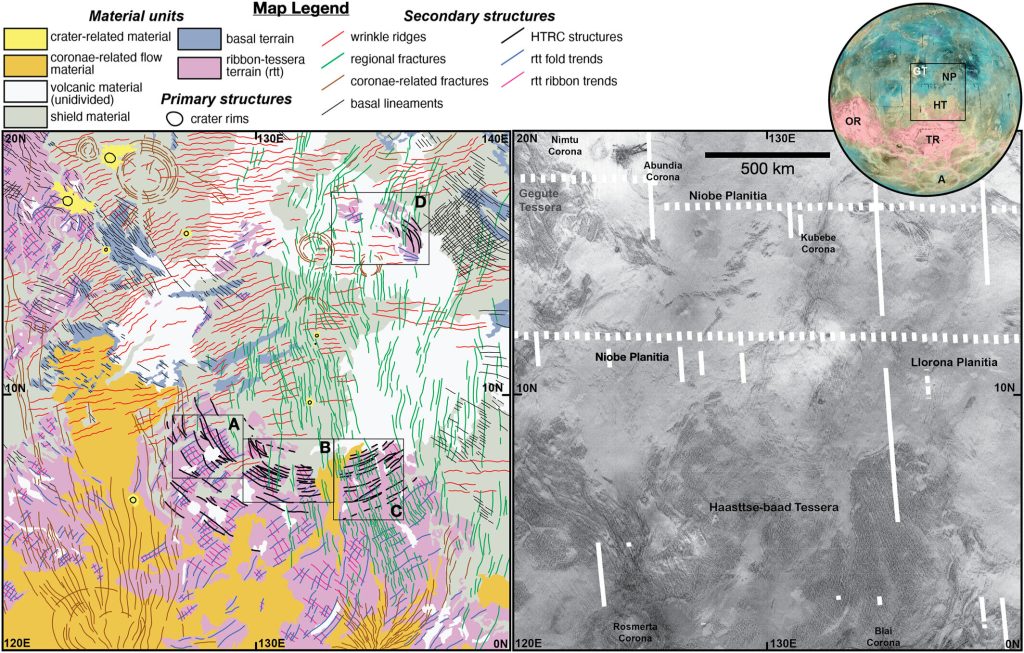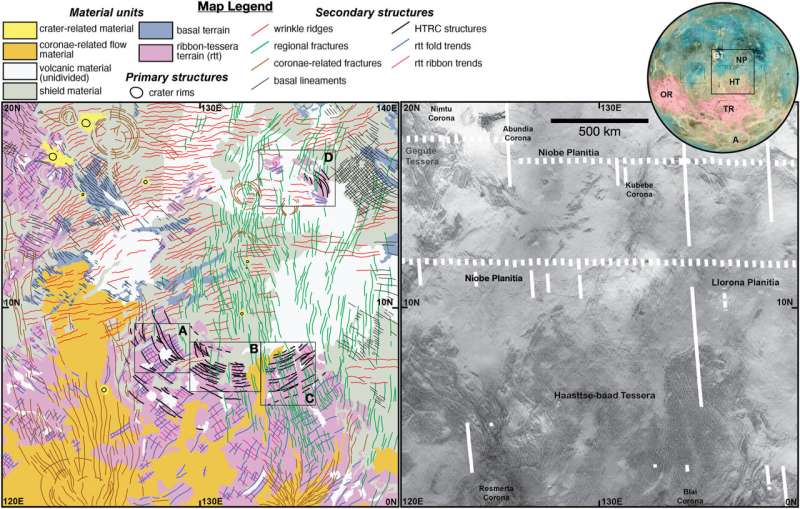
Study of Venus’s Haasttse-baad Tessera suggests formation by two large impacts (Image Credit: Phys.org)

A trio of geologists and environmental scientists from Universidad Rey Juan Carlos, Lawrence Livermore National Laboratory, and the University of Minnesota has found evidence suggesting that the Haasttse-baad Tessera formation on Venus was likely formed due to two large impacts early in the planet’s history.
In their paper published in the Journal of Geophysical Research: Planets, Iván López, Evan Bjonnes and Vicki Hansen describe how they used geologic relations and numerical modeling to develop a theory to describe Venus’s oldest recognized terrain feature.
Prior research has shown a large concentric multi-circle formation on the surface of Venus called Haasttse-baad Tessera. Prior research has also shown that, unlike other planets in the solar system, Venus has no evidence of crater impacts larger than 300 kilometers across. In this new effort, the research trio wondered if Haasttse-baad Tessera might be evidence of a much larger impact.
To find out, they took measurements of the formation and compared them with another formation—one found on Callisto, one of Jupiter’s moons. Prior evidence suggests its multi-ring surface structure was formed due to a large impact. The rings were formed rather than craters because they were made of frigid water that surged from below the surface after the impact, deforming the crust. Finding similarities, the researchers carried out numerical modeling to find out if the concentric circles on Venus may have come about similarly.
The modeling showed that it was possible that not long after Venus was formed, it developed a thin skin over a molten surface. An asteroid or other large body striking it would have punched through the surface, causing molten material below the surface to be pushed out onto the nearby surface, deforming the crust in ways similar to that seen on Callisto. The result would be similar types of concentric circles.
Further study showed that some circles were offset, suggesting that the planet had been struck by two objects (each about 75 kilometers across) around the same time in the same place.
The researchers also suggest that the Haasttse-baad Tessera is not sitting on a plateau, like other similar formations, because the material beneath it drained away prior to cooling.
More information:
I. López et al, Haasttse‐baad Tessera Ring Complex: A Valhalla‐Type Impact Structure on Venus?, Journal of Geophysical Research: Planets (2024). DOI: 10.1029/2023JE008256
Journal information:
Journal of Geophysical Research: Planets
© 2024 Science X Network
Study of Venus’s Haasttse-baad Tessera suggests formation by two large impacts (2024, November 5)
retrieved 5 November 2024
from https://phys.org/news/2024-11-venus-haasttse-baad-tessera-formation.html
part may be reproduced without the written permission. The content is provided for information purposes only.








